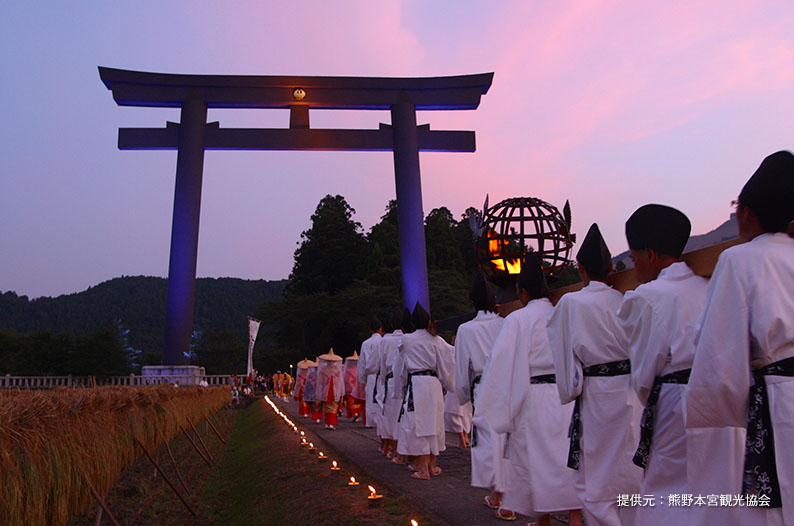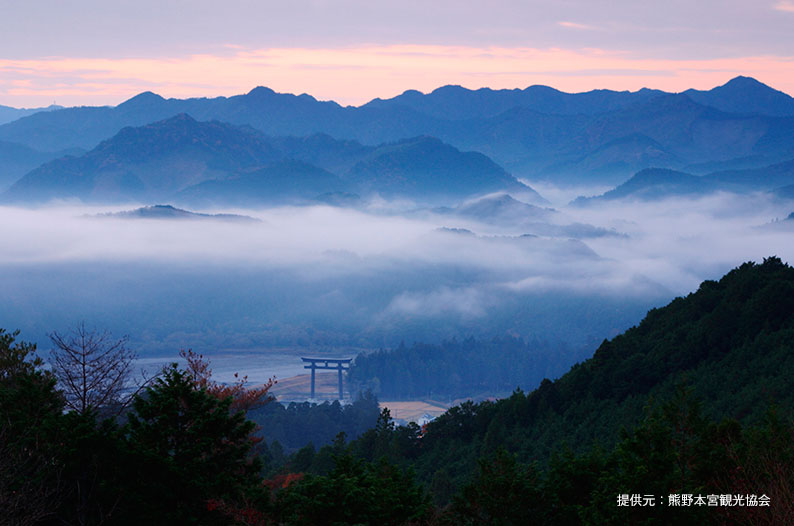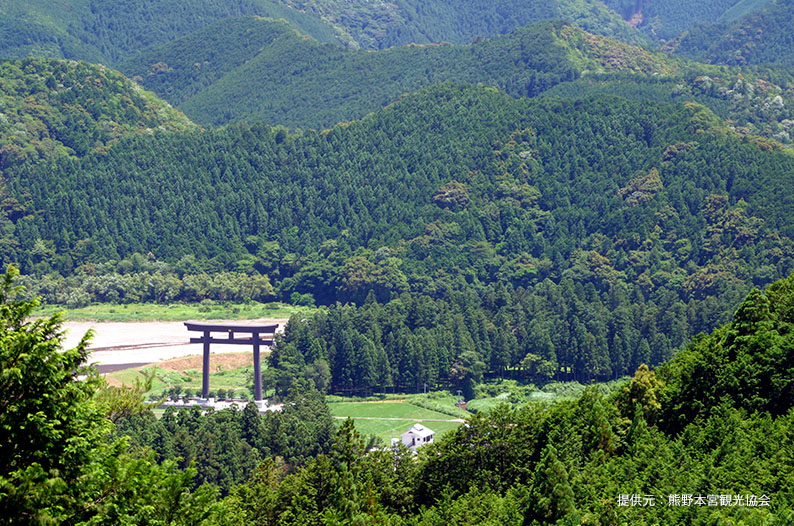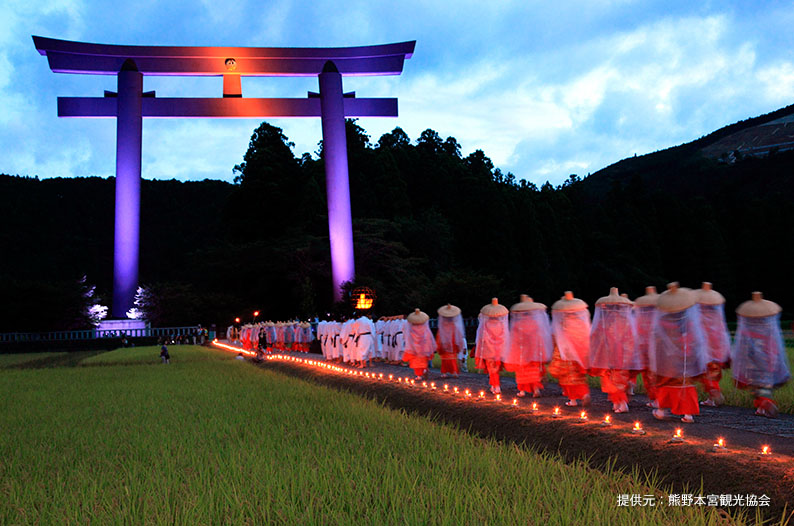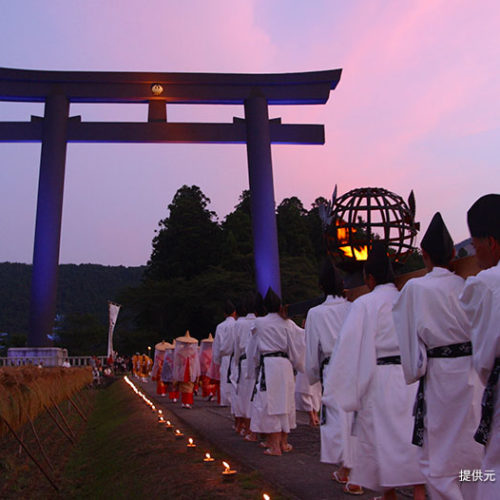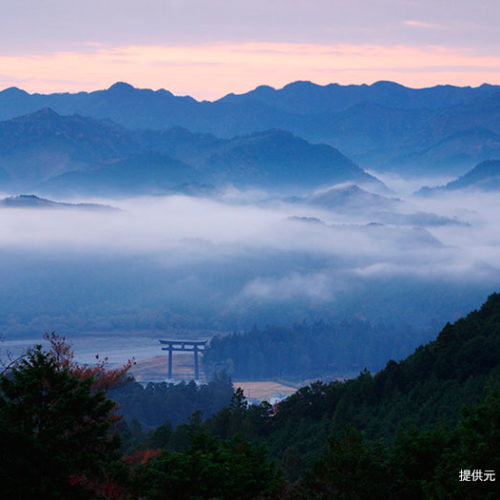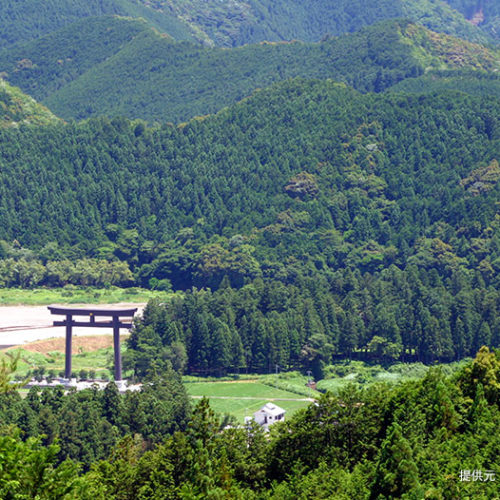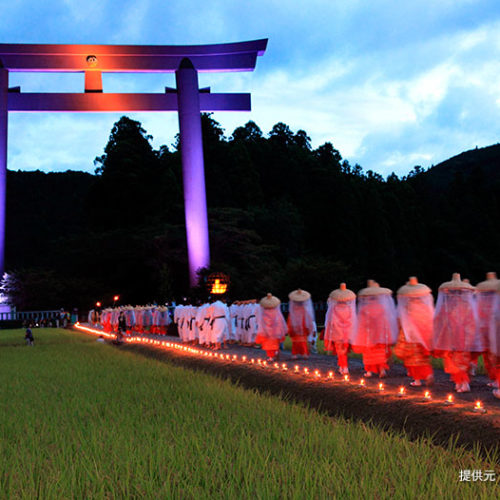In this sacred area tucked away in the mountains of the Kii Peninsula, it’s easy to imagine prehistoric residents being moved to worship the surrounding nature. This natural form of worship gave rise to the Three Grand Kumano Shrines of Hongu, Hayatama and Nachi, known as the Kumano Sanzan. As Shinto animism started to blend with the emerging Buddhism in the 10th century, pilgrims began to travel the Kumano Kodo Pilgrimage Trail to worship all three deities. At first Imperial pilgrims came, followed by commoners, travelling in long processions.
Kumano Hongu Taisha was originally located at the confluence of the Kumano and Otonashi Rivers, a site so sacred that it became the final destination of all pilgrimage routes along the Kumano Kodo. A severe flood at the end of the 19th century necessitated Hongu’s move to its current location, but the world’s largest Torii gate stands at the original site. Kumano Nachi Taisha, is set in a spectacular setting next the tallest waterfall (133m) in Japan, believed to contain the spirit of the main deity. Nachi is surrounded by dense forest and many waterfalls, in which many a monk underwent ascetic training. At Kumano Hayatama Taisha, the Kumano River empties into the Pacific Ocean. Hayatama is also home to Kamikura Shrine, built up against a boulder that’s as big as the shrine itself, believed to be the very spot where the Kumano Gods first descended.
The Three Grand Kumano Shrines are considered to be the head shrines of the 3,800 Kumano shrines spread across Japan, where people have continued praying for travel safety, prosperity, longevity, harmony and good marriages. Makes you want to come pilgrimming here, doesn’t it?
January 12, 2017
